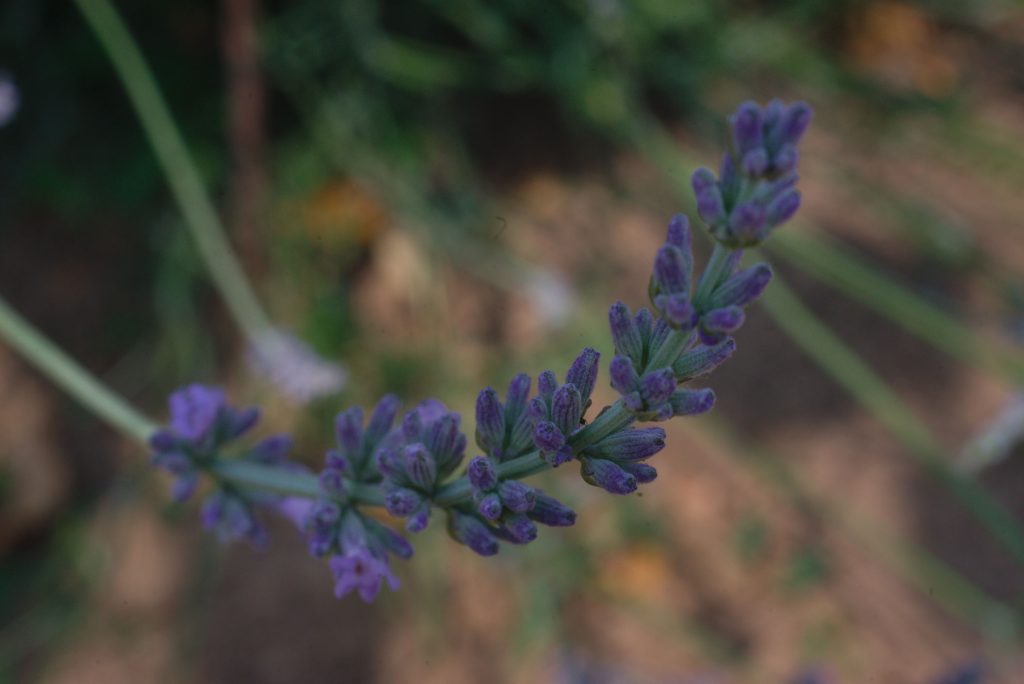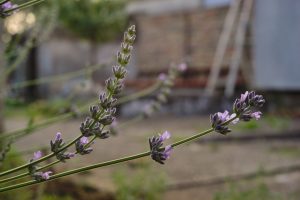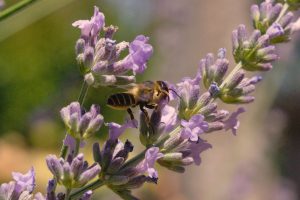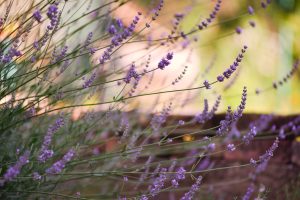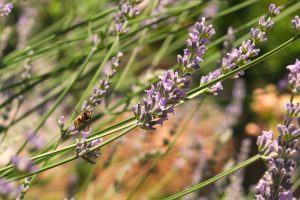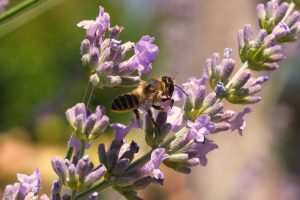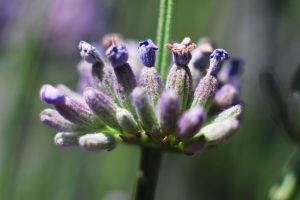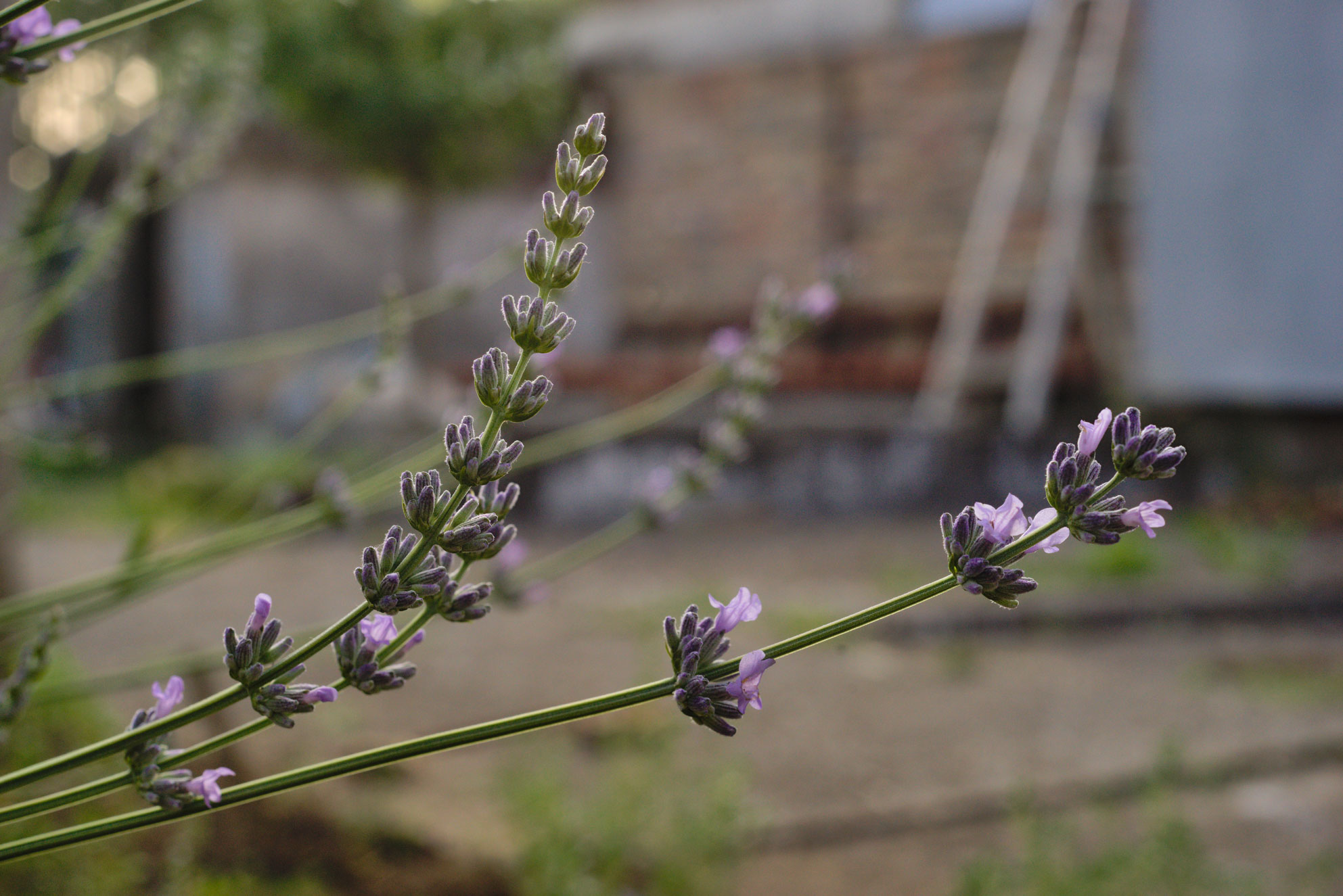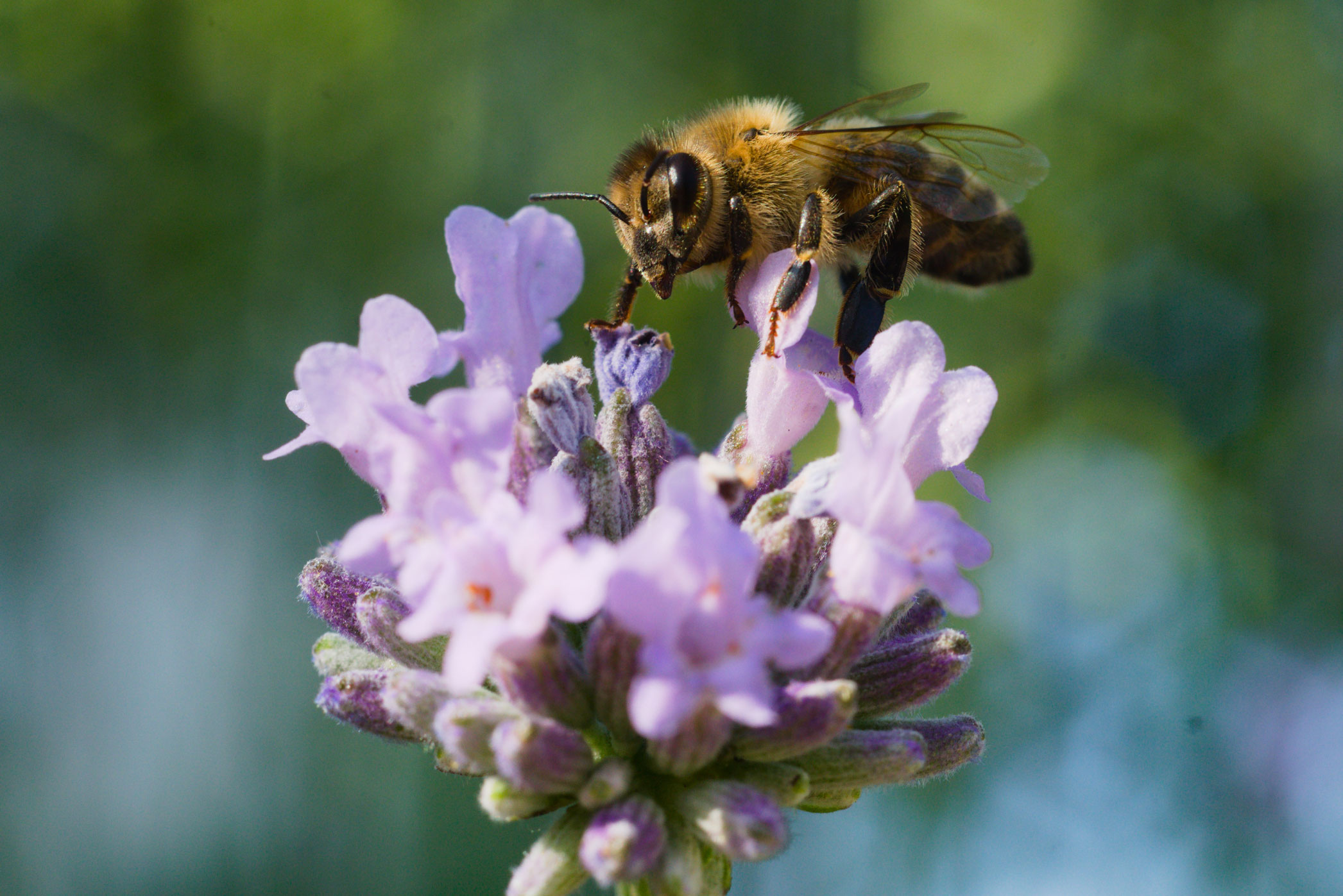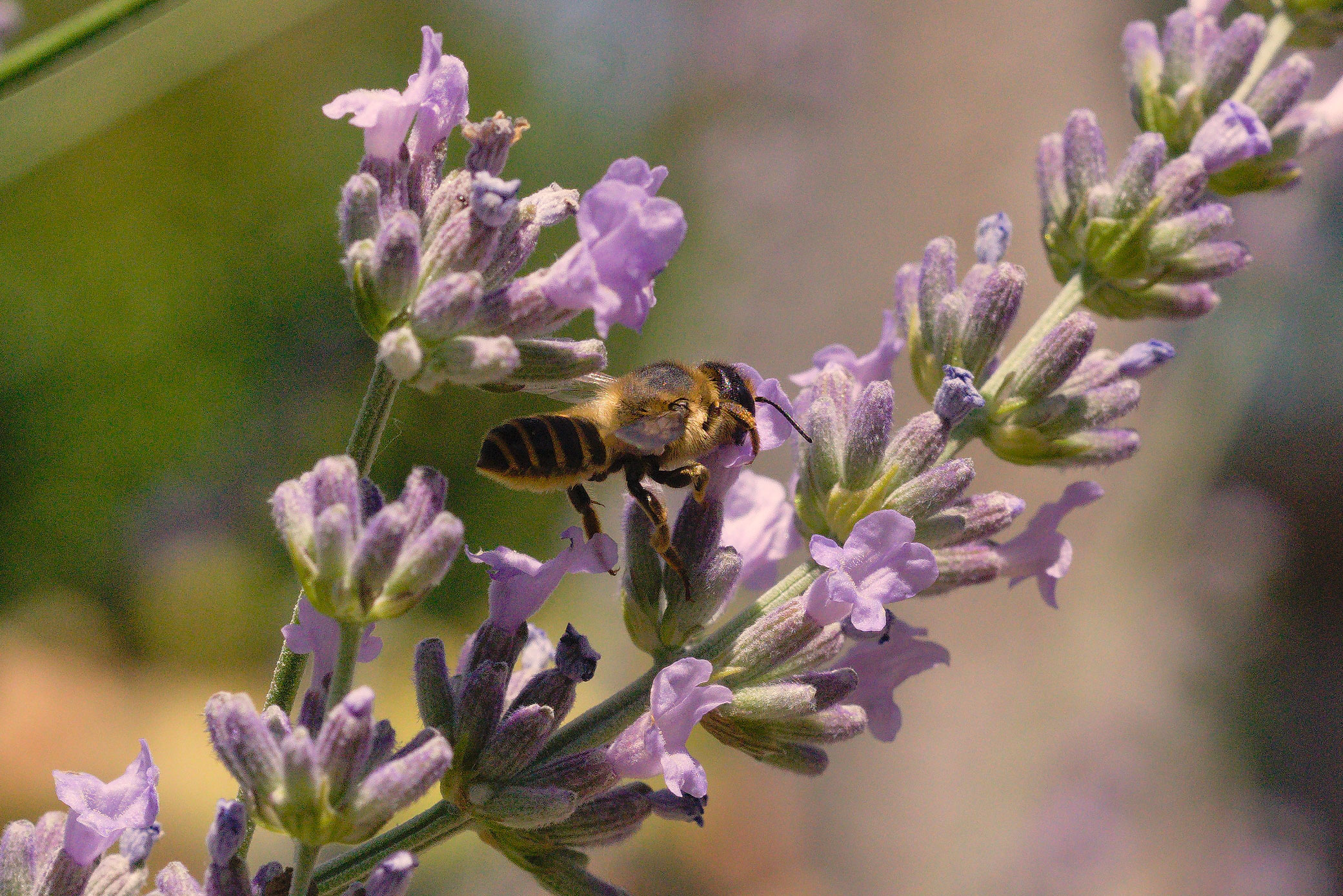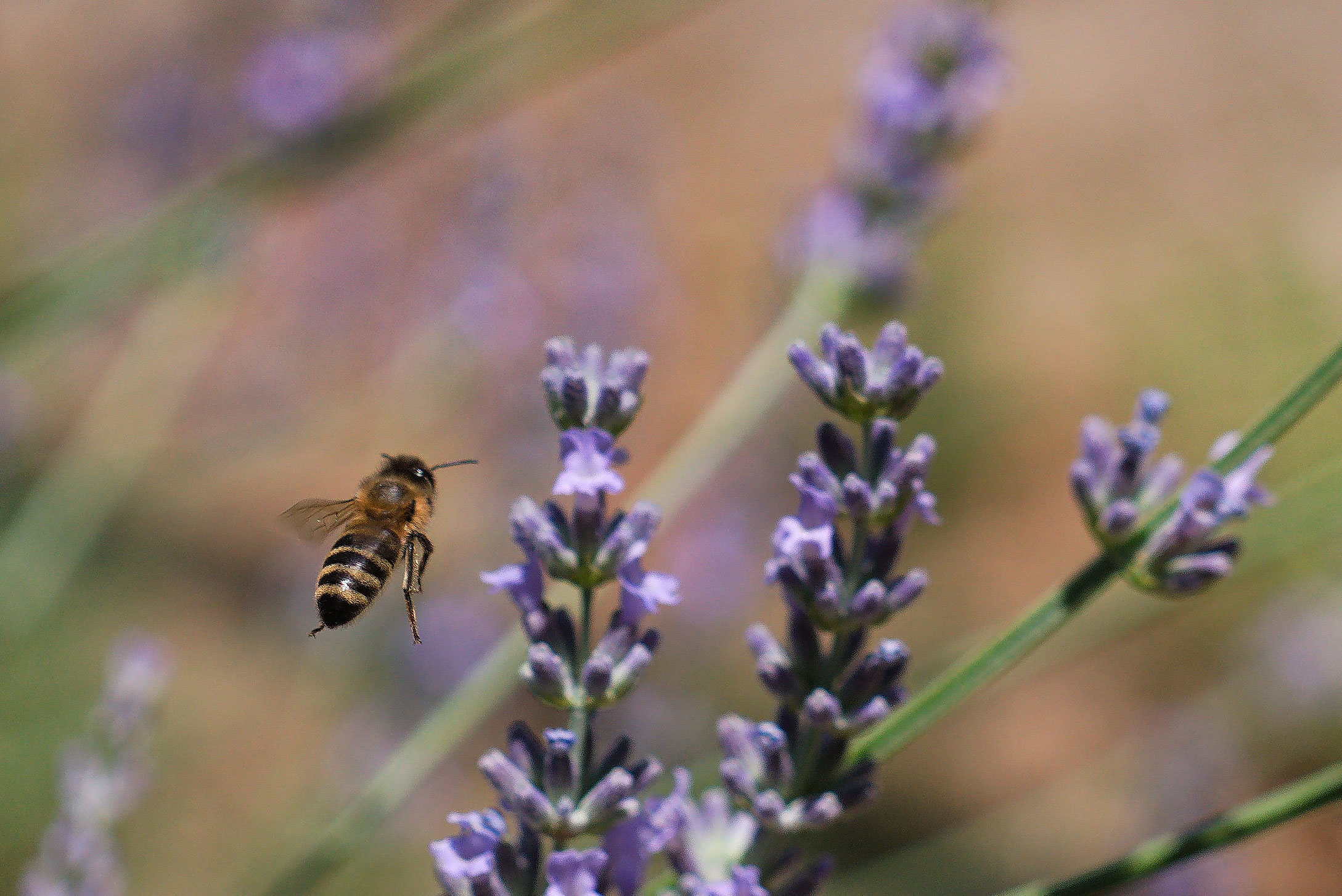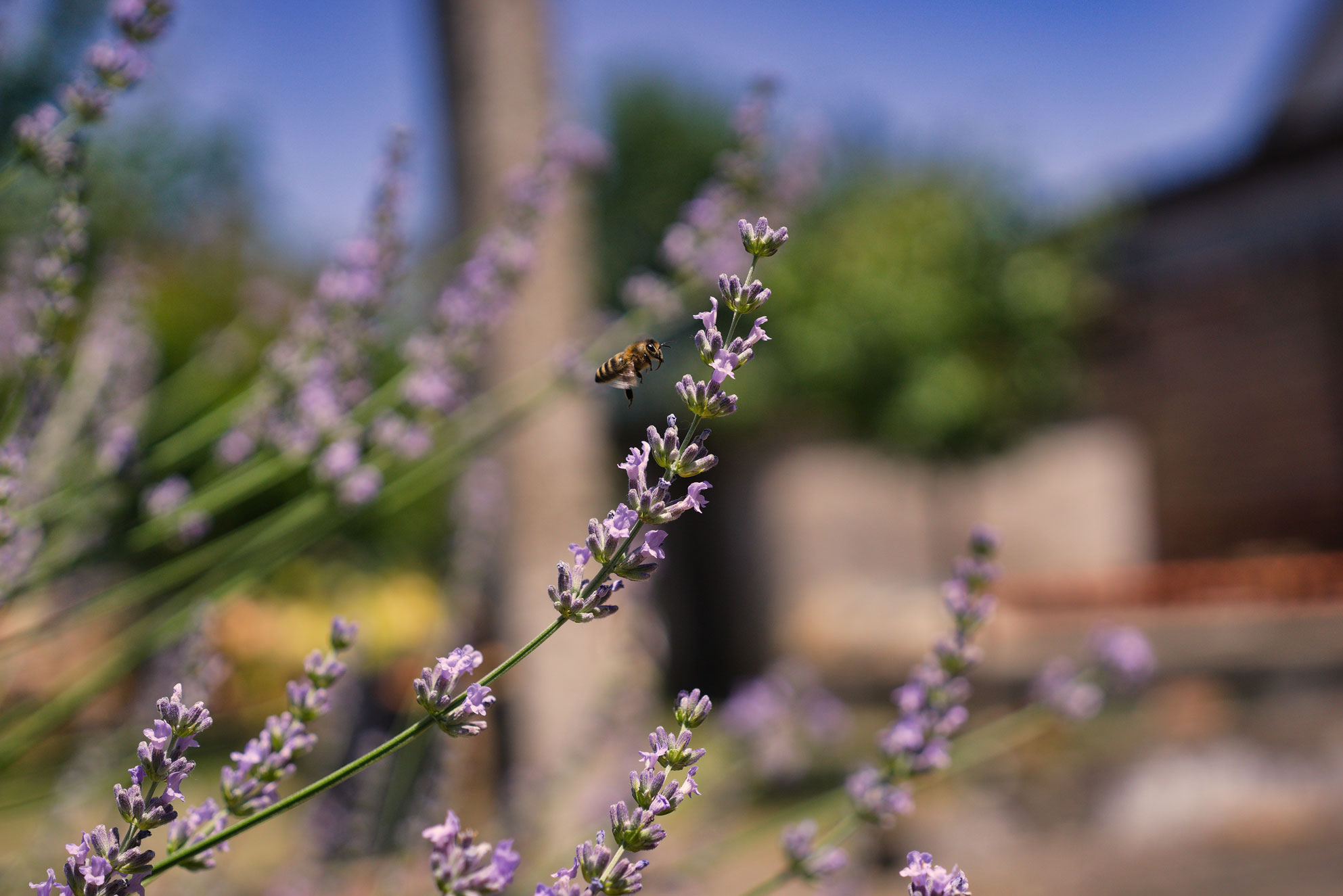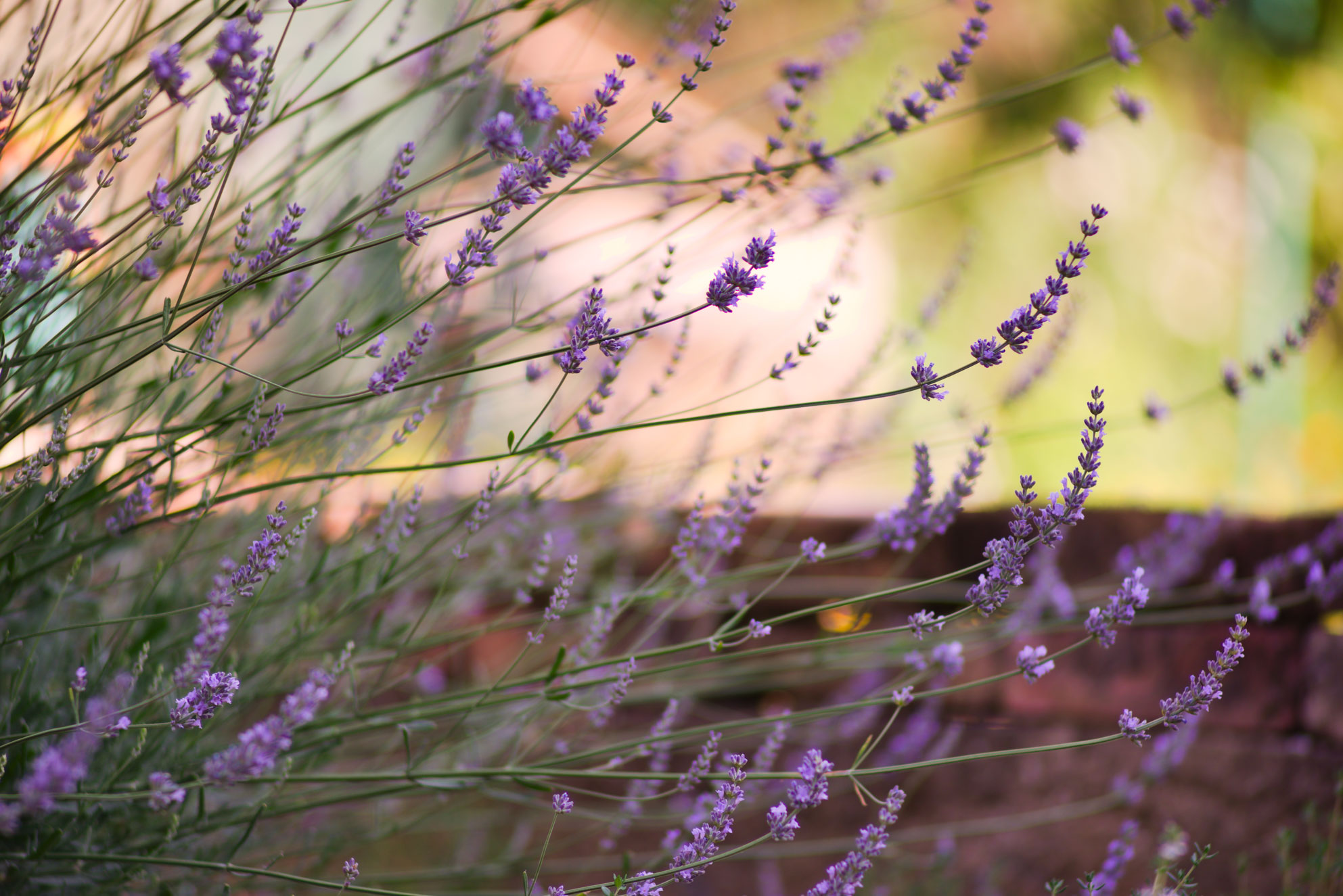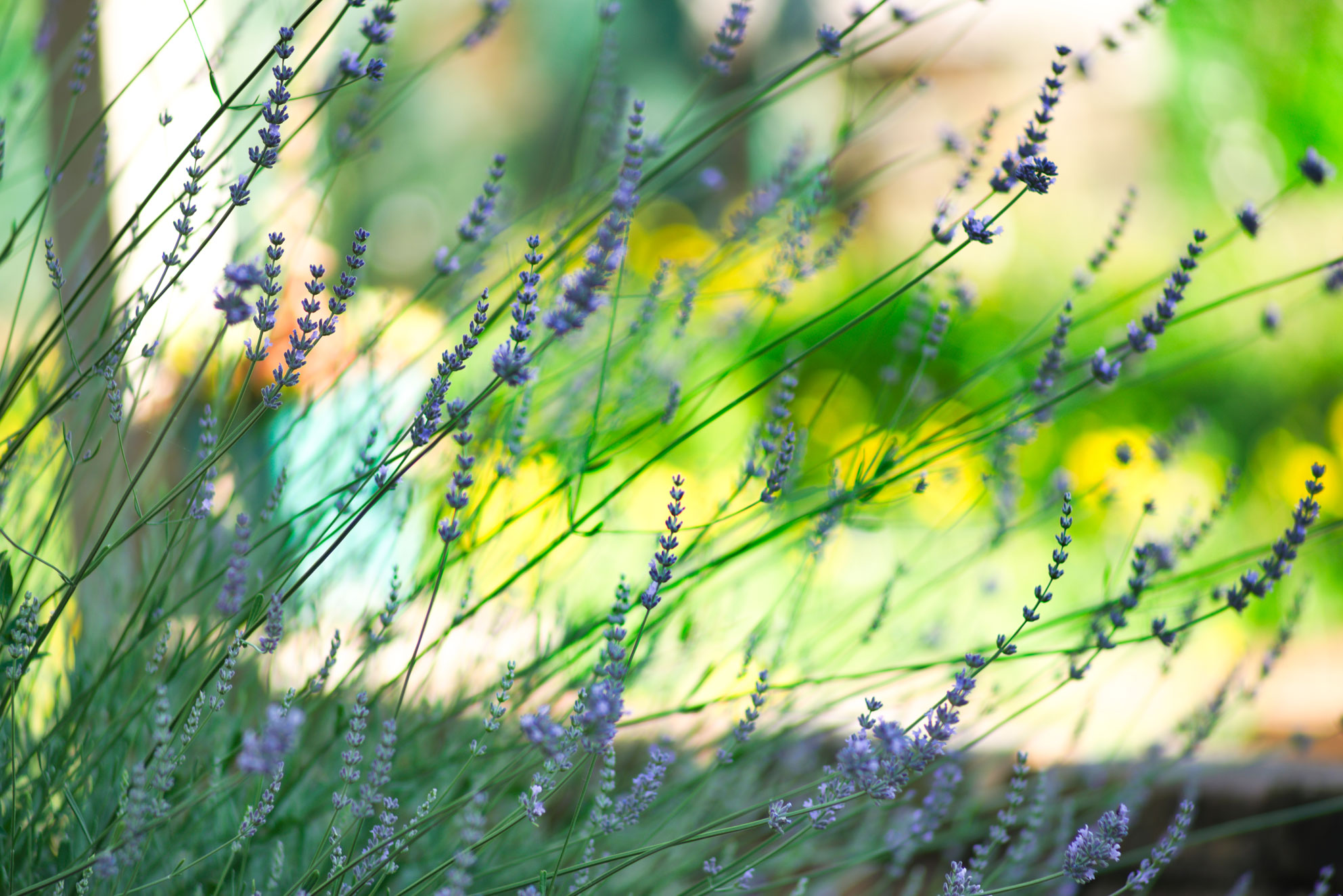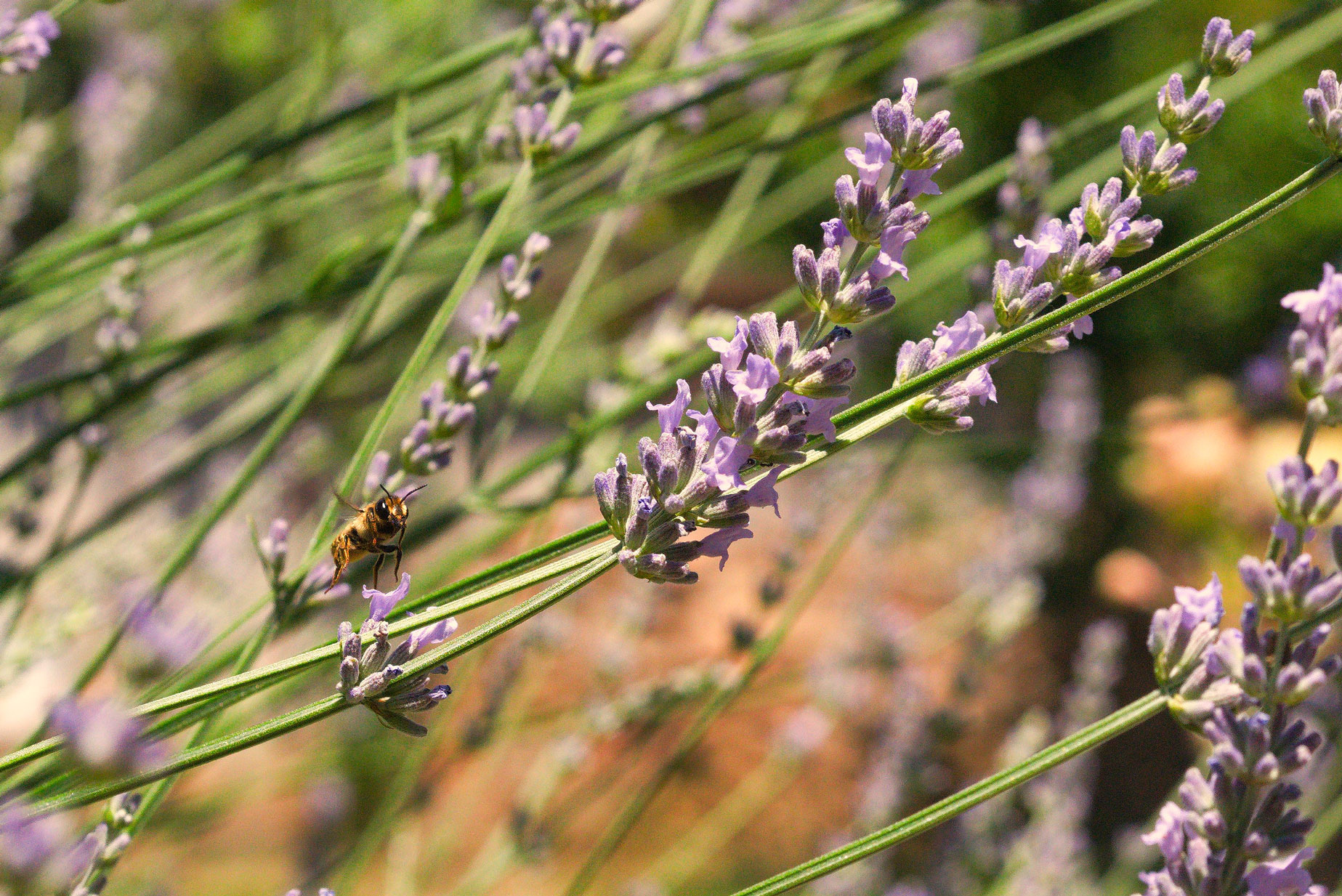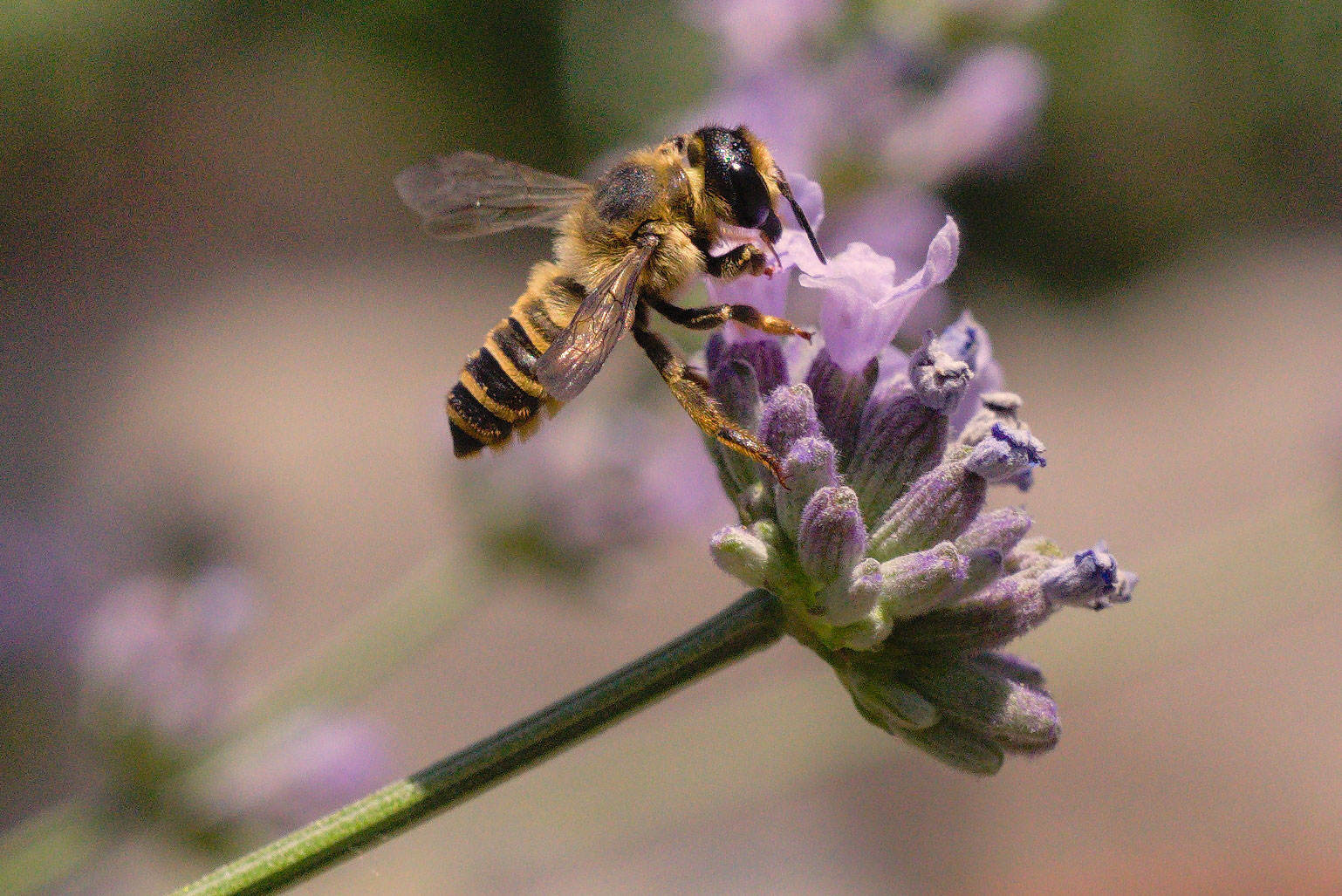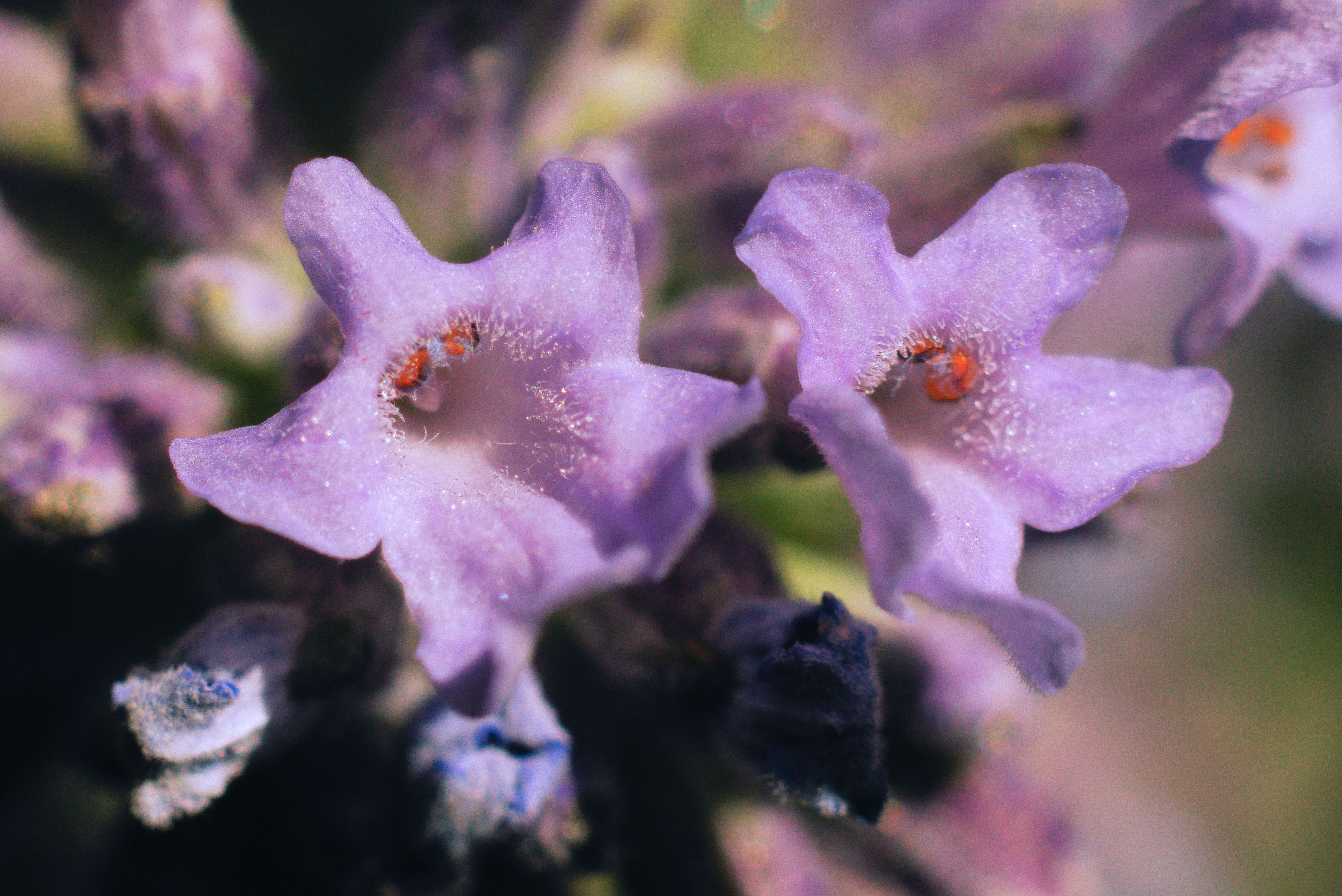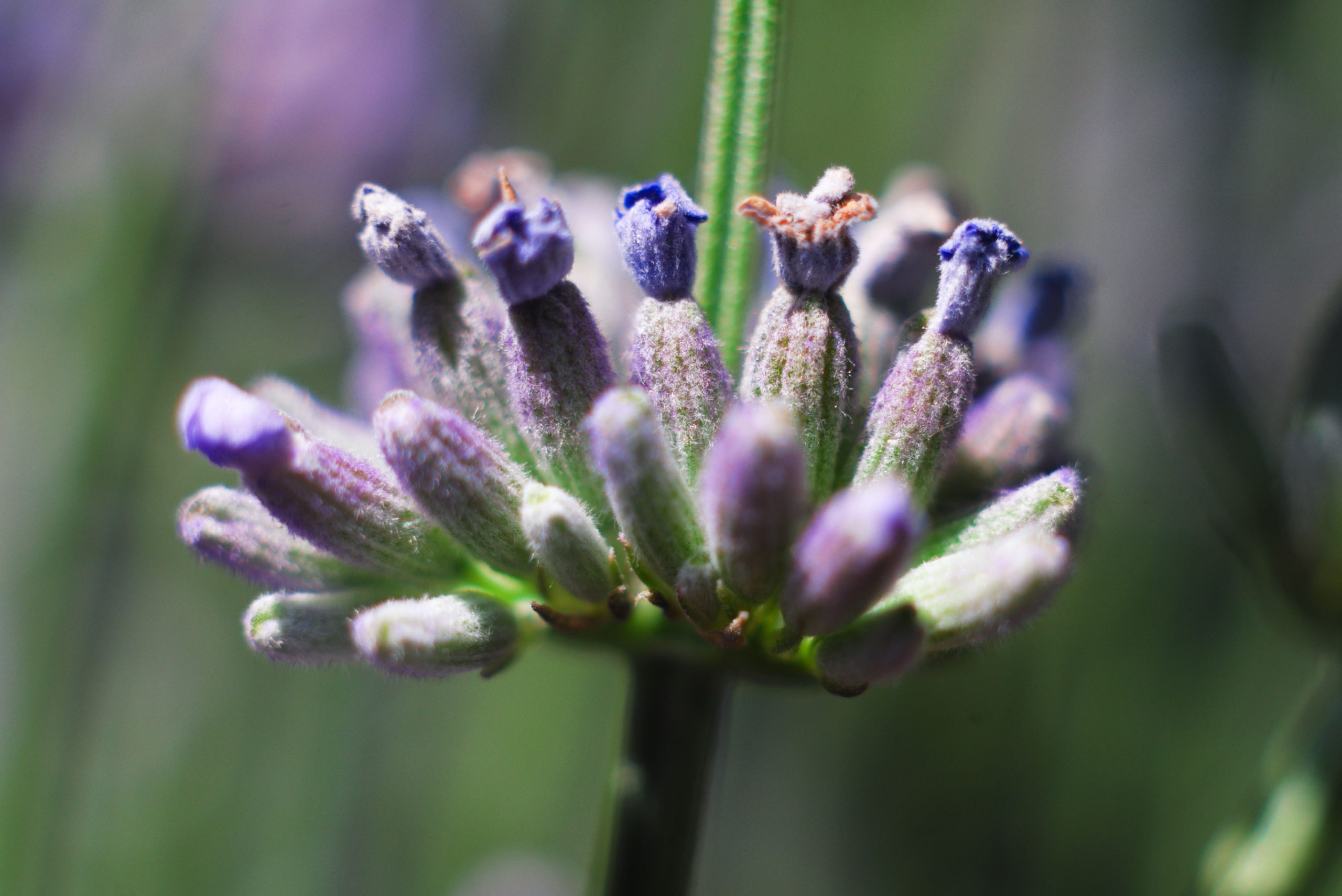Lavender (Lavandula angustifolia)
Lavender refers to a genus of flowering plants in the Lamiaceae family, also known as the mint family. The genus name Lavandula encompasses around 45 known species and numerous cultivars and hybrids. The most widely cultivated and studied species is Lavandula angustifolia, often referred to as “English lavender,” despite its Mediterranean origin. It is a hardy, resilient, aromatic shrub. Native to the Mediterranean basin, it thrives in sunny, dry environments and rocky soils. This perennial plant forms compact clumps that usually reach 2 to 3 feet (0.6 to 0.9 meters) in height, though some varieties can grow taller. Its gray-green leaves are narrow, linear, and highly fragrant.

In summer, lavender sends up long flowering spikes adorned with small, purple-blue blossoms. These flowers are rich in nectar, attracting bees, butterflies, and other pollinators. The plant’s scent, a hallmark of Mediterranean gardens, comes from the essential oils concentrated in its flowers and foliage.
Lavender prefers full sun and well-drained soils and tolerates drought well once established. It dislikes excess moisture and humid conditions. Often used ornamentally in borders, hedges, and rock gardens, it also helps stabilize slopes and attract beneficial insects. Gardeners value it for its visual appeal, resilience, and ability to thrive in low-maintenance, water-wise landscapes. Its calming fragrance has also inspired widespread cultivation across temperate climates worldwide.
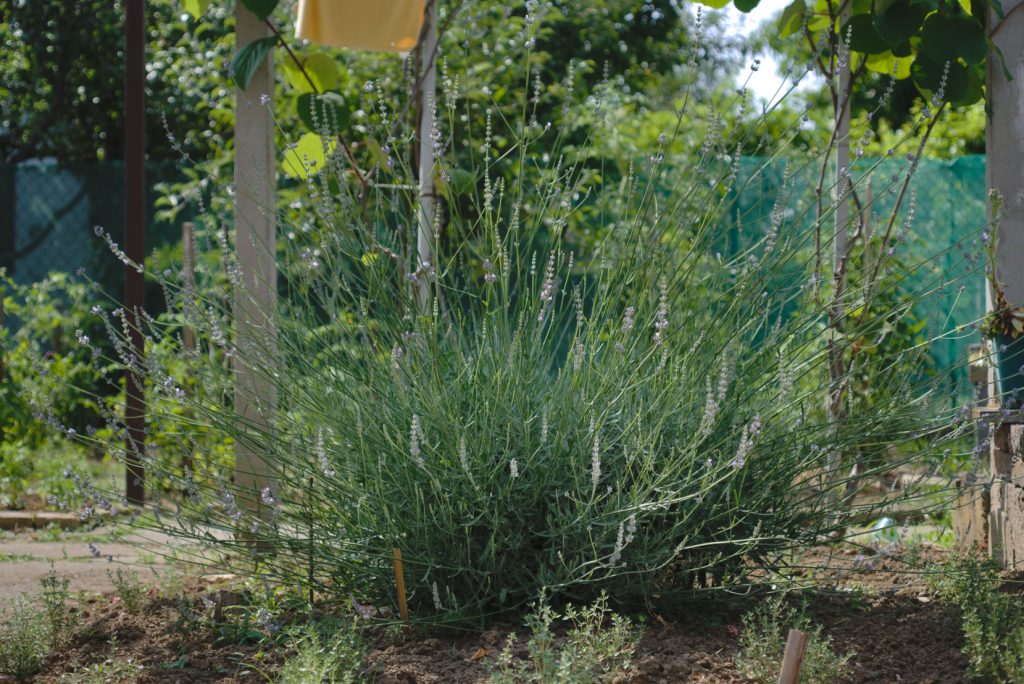
Scientific Classification of Lavender
| Kingdom | Plantae |
| Clade | Angiosperms |
| Clade | Eudicots |
| Clade | Asterids |
| Order | Lamiales |
| Family | Lamiaceae |
| Genus | Lavandula |
| Scientific Name | Lavandula angustifolia |

Few of the most commonly encountered species:
- Lavandula angustifolia – Known as “true lavender.” High-quality oil; used in perfumery and therapeutic applications.
- Lavandula stoechas – Recognizable by its tufted “rabbit ear” flower bracts. Strong scent; often grown as an ornamental.
- Lavandula dentata – Also called “French lavender”; toothed leaves, softer fragrance.
- Lavandula x intermedia – A hybrid (also known as lavandin); bred for commercial oil production. More camphorous scent.
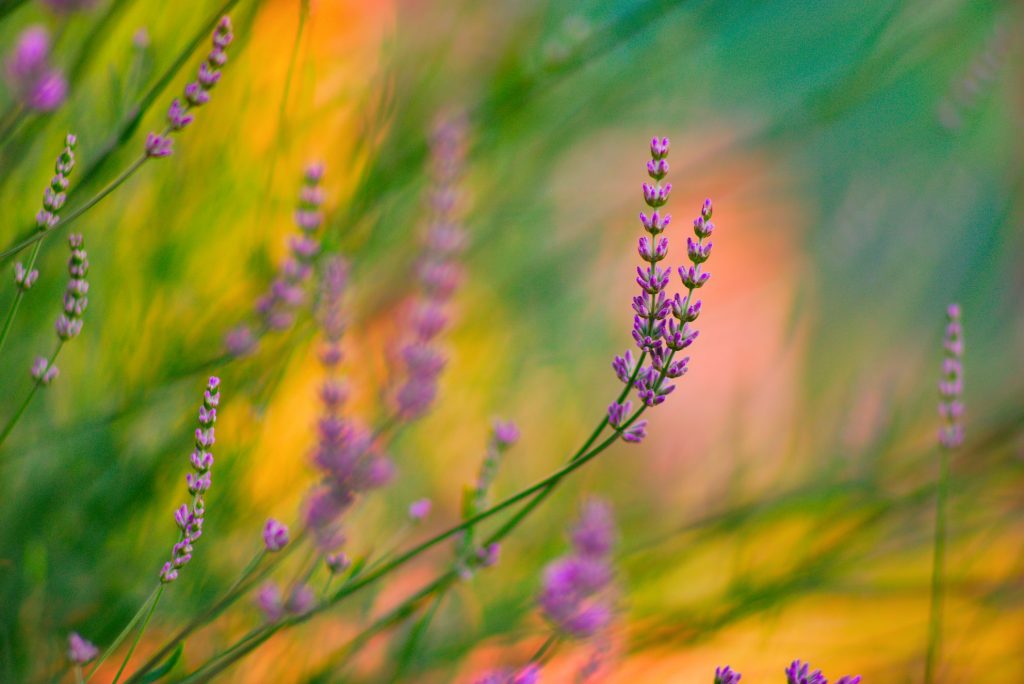
Quick Information
| Plant Type | Perennial shrub |
| Identification | Height: 2 to 3 feet (0.6 to 0.9 meters) Leaves: Narrow, gray-green, aromatic Stem: Woody at base, green and soft above Flowers: Purple to blue, on tall spikes in summer Roots: Deep, fibrous Growth Habit: Compact, bushy, upright |
| Distribution | Native to the Mediterranean, cultivated globally |
| Habitat | Dry slopes, open woodlands, rocky terrain |
| USDA Hardiness Zone | Zones 5–9 |
| Growth Rate | Moderate |
| Lifespan | Long-lived perennial |
| Growing Conditions | Sunlight: Full sun Soil: Well-drained, sandy or rocky Water: Low to moderate, drought-tolerant |
| Drought Tolerance | High |
| Diseases | Root rot in poorly drained soils, fungal leaf spots |
| Pests | Spittlebugs, whiteflies, aphids |
| Reproductive System | Flowers are hermaphroditic, pollinated by insects |
| Propagation | Seeds, cuttings |
| Wildlife Value | Attracts bees, butterflies, and other pollinators |
| Uses | Ornamental plant for gardens and borders, used in essential oils, soaps, potpourri |
| IUCN Conservation Status | Not Evaluated |

Ideal Growing Conditions
To successfully grow lavender, whether in the ground or in containers, the following conditions are generally ideal:
- Sunlight: Full sun (at least 6–8 hours per day)
- Soil: Well-drained, sandy or rocky soil with a neutral to alkaline pH (6.5–8)
- Watering: Low water requirements; overwatering can lead to root rot
- Airflow: Good circulation helps prevent fungal issues
- Temperature: Most types tolerate mild frost; L. angustifolia is more cold-hardy, while L. stoechas and L. dentata prefer warmer climates
Lavender is drought-tolerant once established and performs best when not overpampered — poor soil often leads to more aromatic oils, making it ideal for essential oil production.
